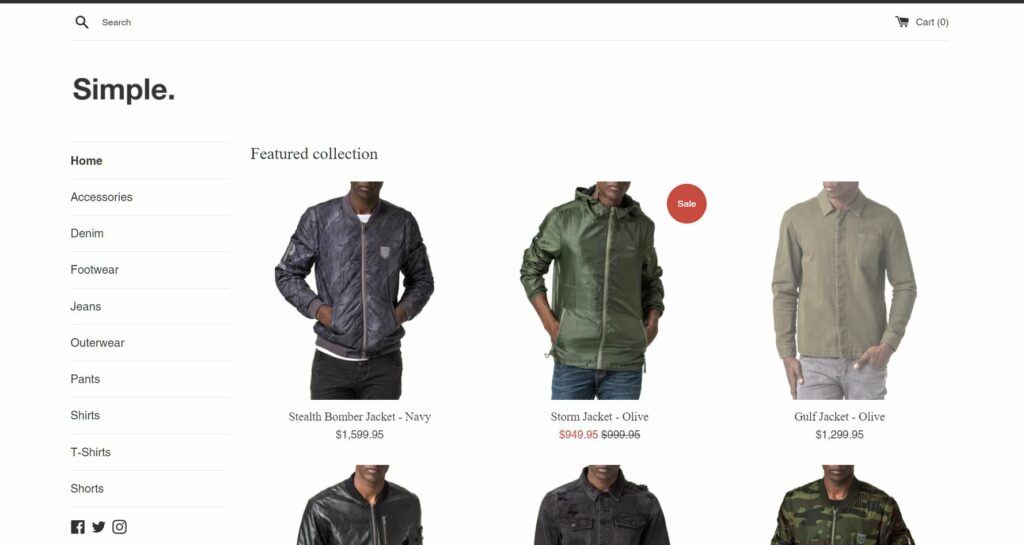A significant component of your e-commerce strategy is to tidy up the website and revamp some parts on a regular basis. This basically means giving time and not neglecting the store, especially if you’re a start-up. When you first launched your e-commerce site, you were probably more than excited to manage all the nitty-gritties. Eventually, as the enterprise has managed to bring in income, you might have shifted your focus on ensuring the product supply or accounting that you overlooked some aspects of your online store. This, obviously, will compromise customer service, which translates into loss of income.
As said, the key to keeping your e-commerce website refreshed and updated is giving it your time. You should do the following regularly:
Dust Off the Cyber-cobwebs and Update Your Themes
Just like in a brick and mortar store, you will also have to dust the cobwebs off your online store. This means taking off old promotional banners, clearing out outdated content, and updating that “certain products are not yet available” post. You will also have to check the comments left by your customers and provide appropriate responses.
Additionally, if you’ve invested in Shopify web development, you should constantly update your site’s theme. Theme designers often release new and updated versions of their published themes on the Theme Store. These updated versions usually include new features and bug fixes.
Change What’s On the Display Rack and Present Them Effectively
To make sure your visitors know you’re offering new products, you might want to change what’s on the “featured” list. Customers will always be looking for new products, especially those who have been visiting your e-Commerce website since you began. In case your site has a blog section, post something about your new products so your loyal customers will know.
At this stage of their buyer’s journey, visitors will be clicking on specific products and scrutinising them. However, unlike in traditional outlets, e-Commerce websites can’t grant customers physical access to the items. Therefore, it’s your duty to present your products in the best light possible.
Feature high-resolution photos of your products and include a zoom feature so they can have an up-close view of minute details. Capture your merchandise from different angles and avoid putting product images from other sites. Complement these product images with enticing and engaging descriptions that give justice to how your items look and perform in real life. Aim to tell a story while being informative, trustworthy and relatable instead of settling for plain spiels.
Your next step is to create a sense of urgency so you can seal the deal. When shoppers feel pressured because they sense scarcity in product selection, they’ll eventually push through with a purchase. You can achieve this by highlighting limited edition products, displaying stock levels, creating discount timers, and more. You can easily do these if you’ve set up your online store with Shopify or Woocommerce web development.
Put Promotions in Big Banners
Make sure promotions like sales and contests are visible on your site. In case you have a separate page for special sales and other promotions, make sure that it’s updated. You don’t want your customers to think that you can’t think of new activities, as they keep on seeing the same promotions repeatedly.
Optimise the Checkout Process
The buyer is almost at the end of the funnel. What will it take to seal the deal?
Half of visitors who make it to the checkout page abandon their cart due to various reasons. For one, they are turned off by a checkout process that’s overly complicated. Data shows that two-page checkout pages are outperformed by single-page checkouts outperform by 21.8%. While there are advantages to having a multi-step checkout process, asking for too many details can hurt your sales by as much as 73%.
When buyers are at the checkout page, they’re already most likely going to make a purchase so the key is to match their decisiveness. The checkout page’s main priority is to make a sale, so leave the cross-promotions and information collection until after a buyer confirms their payment details.
Presenting important information clearly is also part of checkout page optimisation. To avoid unpleasant surprises for customers, be transparent and upfront about additional costs early into the transaction process. You can adhere to a free shipping policy or flat rate or include a cost calculator for shipping fees. If you have discount codes, avoid placing them on the checkout page when you’re doing Shopify web development. These kinds of prompts may result in cart abandonment as they are too distracting and users will focus their energy on finding ways to obtain those promos and coupons. These fields should be reserved to category pages and product pages as well when you’re doing Woocommerce web development.
Lastly, make sure your customers know that it’s safe to give their personal information to your e-Commerce website. Insert trust signals and provide details regarding return policies and your payment gateway/s.
Boost Your Site Speed
An attractive website may draw customers in, but efficiency and easy navigation are what hold their engagement. Internet users expect an e-Commerce website to load in three seconds or less, and many will terminate their browsing sessions if the page load time goes over three seconds.
This then will negatively affect your profits by hurting your e-Commerce SEO. If users are leaving from your site in a matter of seconds, or spending minimal time on your site, your bounce rate goes up and Google begins seeing your site as less valuable. This in turn will affect your rankings, traffic and, of course, sales.
Start by testing the speed of your website with Google’s Page Speed Insights. This tool will provide you with a detailed report of how your website performs and insights on the changes to be made.
Own the Season
To make your e-commerce site an interesting site to visit, you might want to tweak it depending on the season. It can be as simple as placing an animated snowman during Christmas. It doesn’t have to be like what they’re doing, but look at how Google does it.
Key Takeaway: It’s All About Creating a Memorable Shopping Experience
Keeping your e-Commerce website vibrant and fresh is the key to running a successful online business. Updated content, promotions and an optimised checkout process along with other design elements can make all the difference in turning casual visitors into paying customers.
It doesn’t matter whether you’re using Shopify or Woocommerce web development, following these tips will entice your customers to keep coming back. Most of all, work with a provider that will help your e-commerce site rise above the rest.



